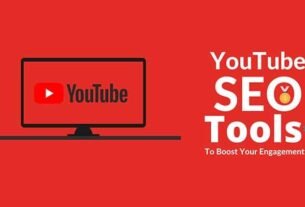It’s very easy to get the impression that all marketing videos are educational in nature. After all, highly effective sales people first educate their prospects regarding the options available to them. Once the prospect feels that they understand their problem enough, then they’re more likely to trust the sales person because a true sales professional gave them the facts or information they needed to at least make the customer feel competent enough to make a decision regarding the situation. That’s how effective sales marketers work.
They disarm through education. It’s a free gift. They’re not asking for money for that free education or free information. This is a key part of them building enough authority and credibility in the eyes of their prospect for them to eventually close the deal.
Unlike traditional marketing, we don’t people have the luxury of time. Either you educate, convince, and close the prospect now or you lose a sale. It is no surprise that a lot of people think that marketing videos have to necessarily explain stuff. They are absolutely correct but not in the way they think.
Usually when people think about educational videos, we’re talking about stuff that’s boring, we’re talking about videos where the speaker just talks to the screen and sometimes rambles on. It’s as if your high school or college teacher shot a video explaining some sort of concept or stepping you through an idea. A lot of marketers confuse the educational aspect of marketing videos with traditional educational videos. This is where they drop the ball. This is where they screw up. The goal is not to bore the viewer to tears.
Unfortunately, that’s the kind of risk you run when you go overboard in the education. While it’s true that highly effective marketing videos explain the problem and the solution to the prospect they do so in a disciplined way. They don’t just ramble on and on about all the things, all the possible solutions, all the pros and cons, all the advantages and disadvantages, who cares. Your job is not to lecture to the prospect. Your job is to get the prospect sign on the dotted line.
Accordingly, the educational component of the video must be disciplined. It must be compact, it must get to the point, it must be limited only to the extent that it leads to conversion. If it goes beyond that, it’s excessive. It’s saying too much. It’s rambling on. This increases the risk that the viewer will get bored, distracted, or confused.
Marketing videos should explain stuff, but they should explain it in a very disciplined, focused, and concise way. What is the point, you educate only up to the point where you earn the trust of the viewer. You do this enough to build credibility. You share enough information to basically buy their trust. Once you get that trust, you then direct the discussion to where you need it to go. It should be obvious.
You need it to go to your product. You need it to go to the service that you are offering. In other words, you need it to go to a discussion where you identify all the most common solutions out there and map them out one by one by focusing on the weaknesses that they all have, which your product or solution doesn’t share. Maybe all the other solutions out there are too expensive. Guess what, your product is affordable. Maybe all the other products out there are inconvenient or cause all sorts of hassles. Guess what, your product is very easy to use and takes effect immediately.
Whatever the case may be, line up the worst elements of the competition against the most positive elements of your solution. In other words, put simply you focus on your strongest points and then use that to direct the conversation. That’s how effective sales people work. By the same token, that’s how highly effective marketing videos are structured. The education is just a small part. It’s very important, but it has to be tightly directed so that it earns trust.
That’s is the only reason why you’ve included education materials in your video script anyway. It’s the price you pay for the viewer to give you their trust. They keep doing that until you build enough credibility in their minds and then that’s when you start directing the discussion to where you need it to go. You need to make your product or solution look good at the expense of the competition.




